Listen Article
The digital world is experiencing a compression revolution that’s reshaping how we store, transmit, and process data. Artificial intelligence has fundamentally transformed data compression algorithms, achieving breakthroughs that seemed impossible just a few years ago. Where traditional compression methods have plateaued after decades of incremental improvements, AI-powered approaches are delivering compression ratios 10x to 200x better while maintaining exceptional quality.

The Revolutionary Breakthrough: LMCompress and Beyond
In May 2025, researchers unveiled LMCompress, a groundbreaking compression method that leverages large language models to achieve unprecedented results. This breakthrough represents more than just an incremental improvement—it’s a paradigm shift that demonstrates the profound connection between understanding and compression. The algorithm achieves nearly one-third the compression rates of zpaq for text, halves JPEG-XL compression for images, and significantly outperforms FLAC for audio and H.264 for video.
The core insight driving these advances is elegantly simple yet revolutionary: if an AI model truly understands data, it can compress it more effectively. This principle has led to compression algorithms that don’t just squeeze data smaller—they intelligently preserve the most critical information while eliminating true redundancy.
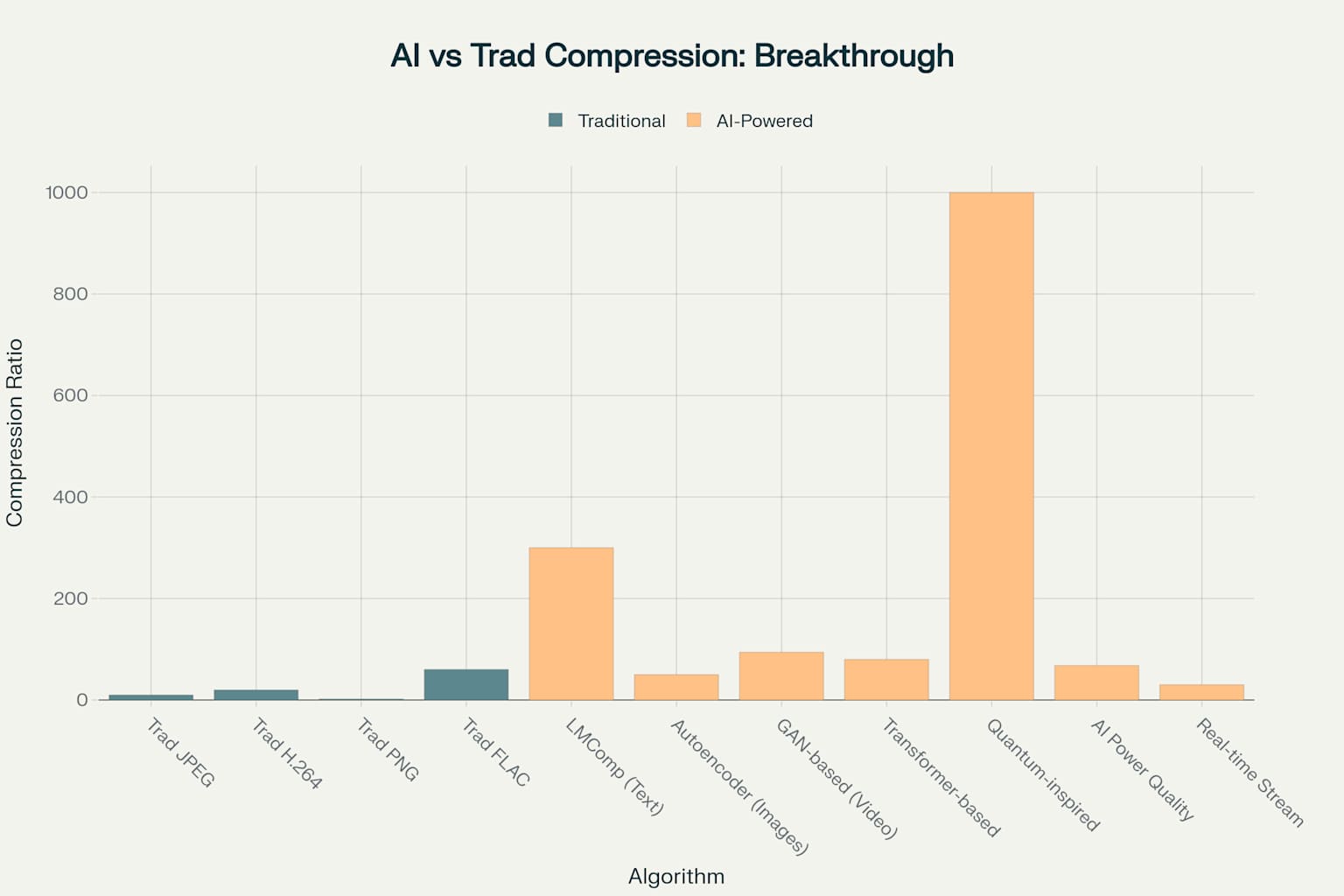
How AI Transforms Traditional Compression
Traditional compression algorithms like JPEG, H.264, and PNG rely on fixed mathematical transforms and predetermined patterns. These methods, while effective for their time, operate on rigid rules that cannot adapt to the unique characteristics of different datasets. AI-powered compression takes a fundamentally different approach by learning optimal representations directly from data.
Neural Network Architectures Driving Change
Autoencoders form the backbone of many AI compression breakthroughs. These neural networks learn to compress data by forcing information through a narrow bottleneck layer, automatically discovering the most efficient representations. Recent advances in autoencoder design have achieved compression ratios of 31.3% better than traditional methods for genomic data and 400-fold reductions for methylation data without compromising reconstruction accuracy.
Generative Adversarial Networks (GANs) represent another major advancement in compression technology. By using competing generator and discriminator networks, GANs can achieve compression ratios above 94% while maintaining SSIM values above 0.97. The MIT Han Lab’s GAN compression framework demonstrates reductions of 9-21x in computational requirements while preserving visual fidelity.
Transformer-based compression leverages the same attention mechanisms that power large language models. These architectures excel at understanding long-range dependencies in data, making them particularly effective for sequential data compression where context matters.
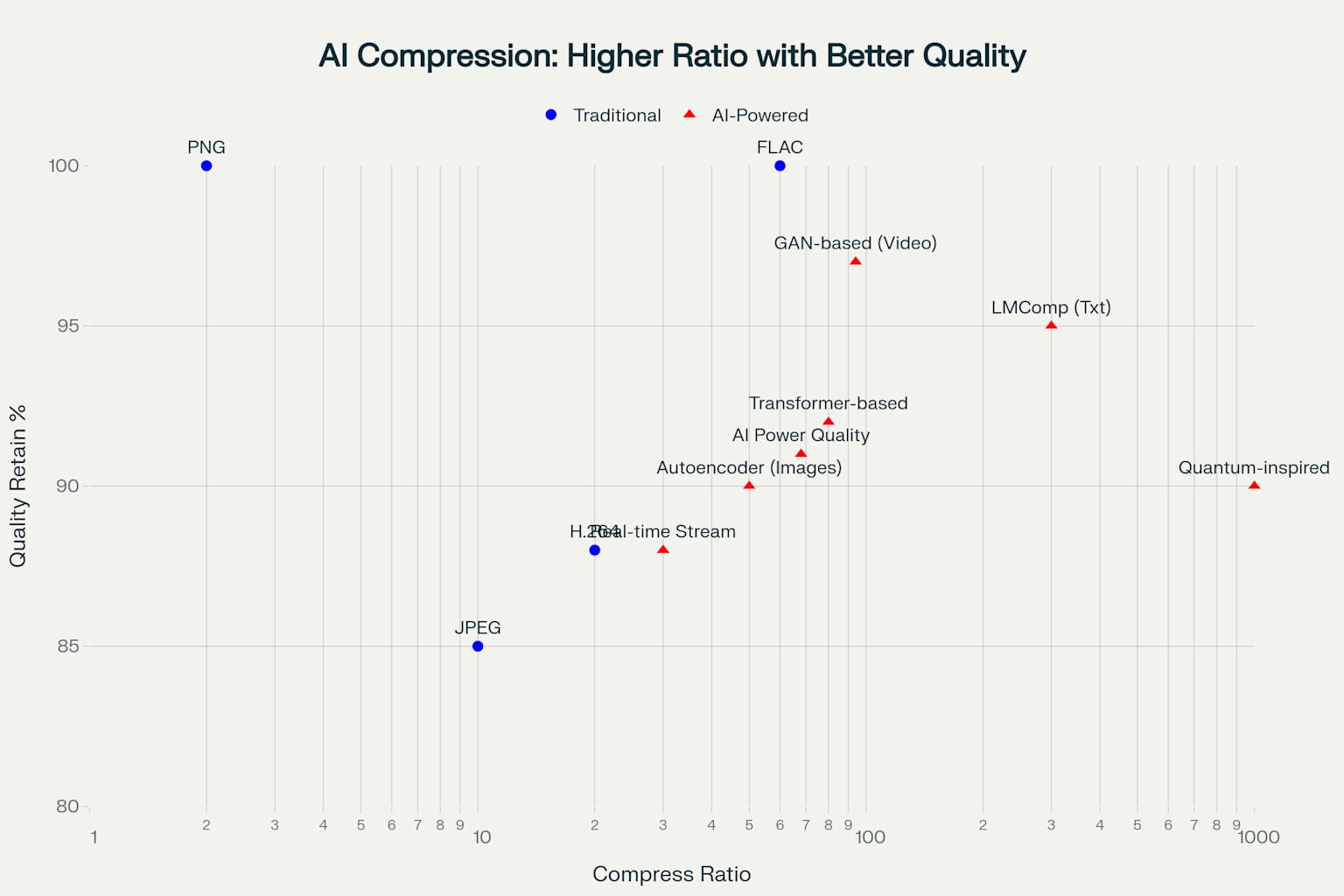
Performance Breakthroughs Across Domains
The impact of AI compression extends far beyond theoretical improvements, delivering transformative results across diverse application domains. Research demonstrates that AI-based compression methods consistently outperform traditional approaches while requiring significantly less computational overhead.
Energy Efficiency Revolution
AI compression algorithms deliver substantial energy savings compared to traditional methods. Modern implementations achieve 40-78% energy reductions while maintaining or improving compression quality. For edge computing applications, this translates to 2-3x battery life improvements for smart sensors and 40% lower cooling costs for data centers.
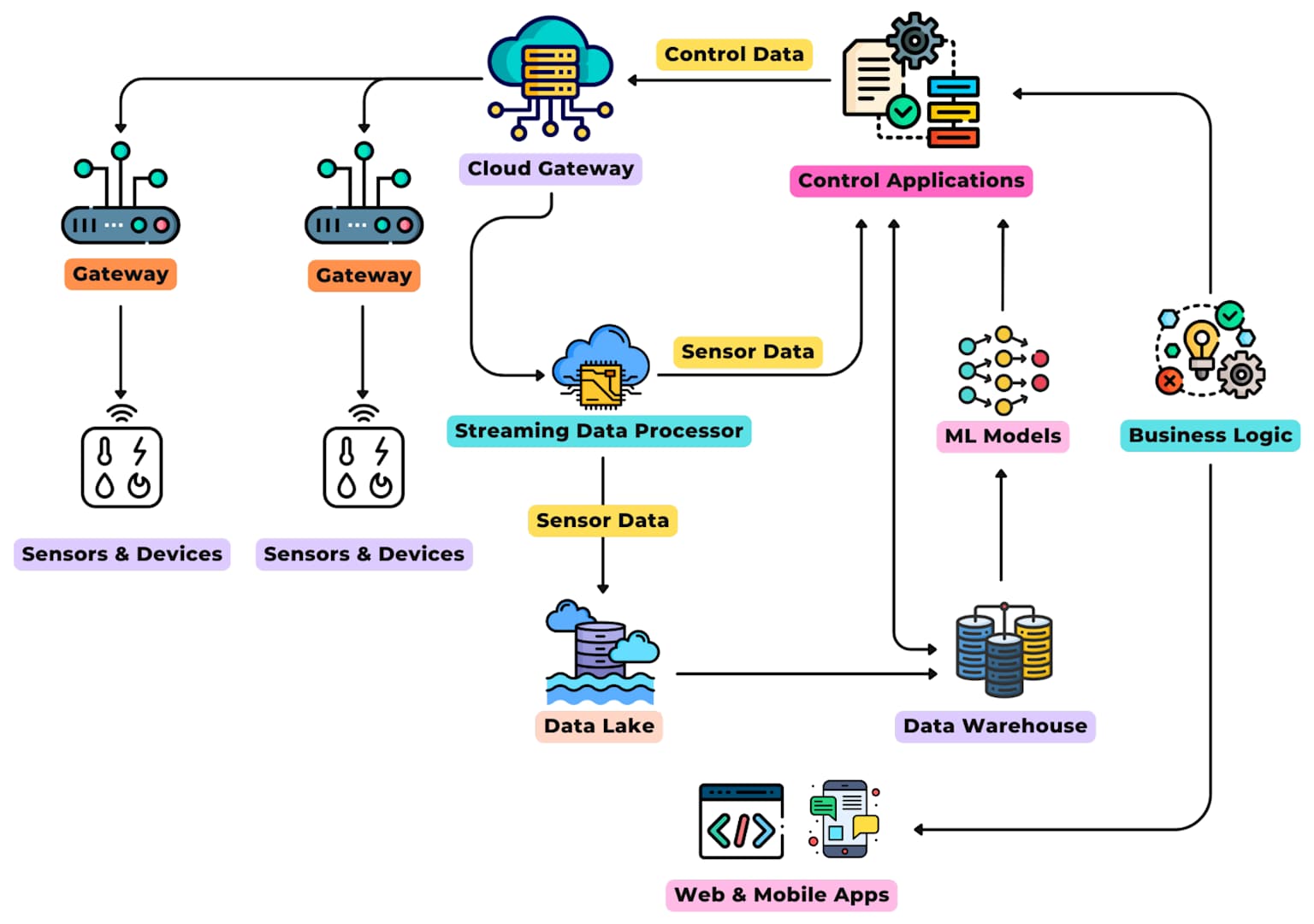
Real-World Applications
IoT and Edge Computing: TinyML algorithms specifically designed for IoT environments achieve remarkable efficiency gains. The CompressEdgeML algorithm uses neural networks for adaptive data compression, while CacheEdgeML employs predictive analytics for smart data caching. These advances enable real-time processing on resource-constrained devices with compression ratios of 10-30% better than traditional methods.
Medical Imaging: AI compression has revolutionized medical data handling, achieving compression rates of 27% better than existing methods for genomic sequences 7 while maintaining diagnostic accuracy. Advanced autoencoder architectures can process medical images with minimal quality loss, crucial for telehealth and remote diagnosis applications.
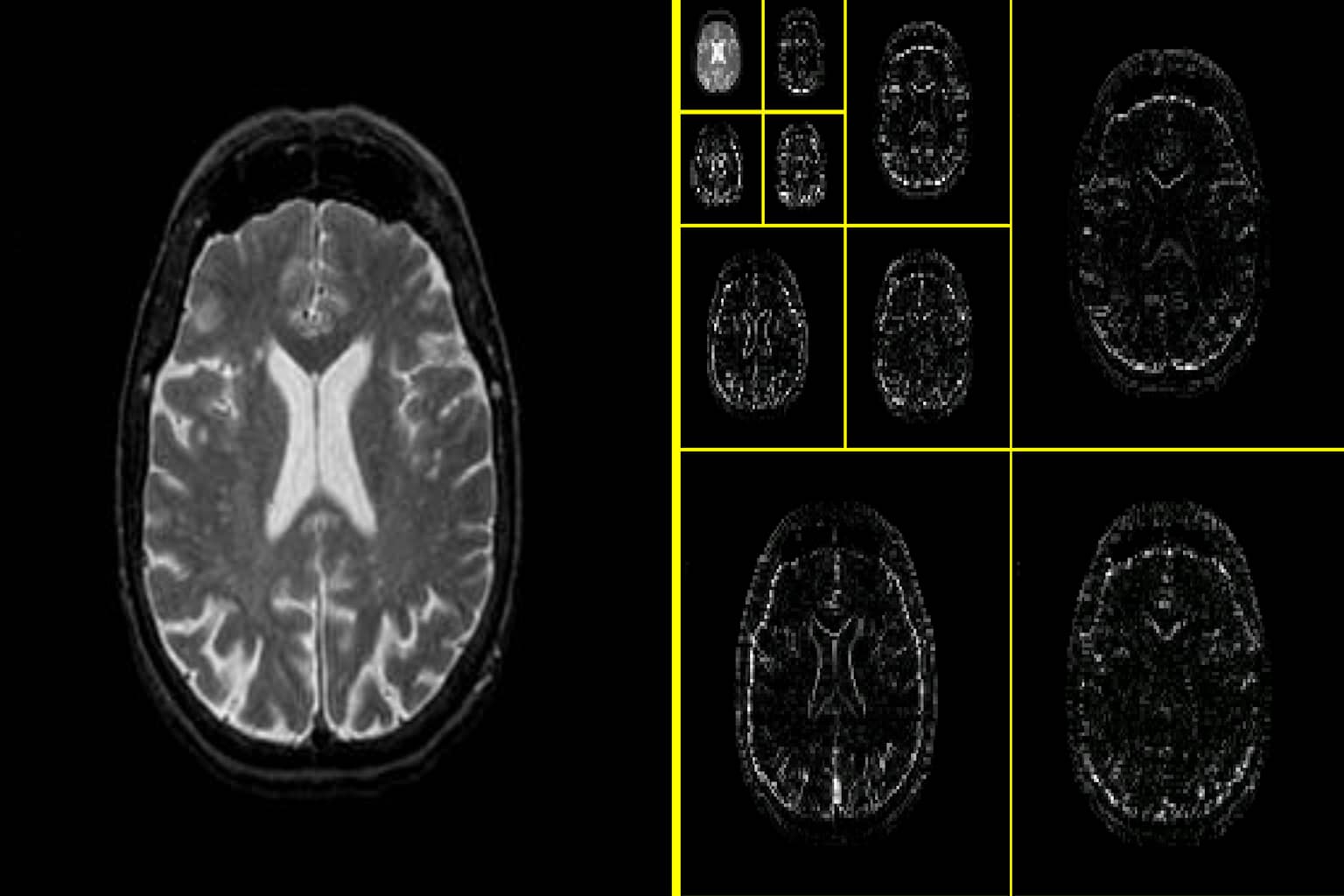
Scientific Data: Large-scale scientific datasets benefit enormously from AI compression, with some applications achieving compression ratios below 0.40 bits per sample. Climate simulation data and high-resolution sensor measurements can now be stored and transmitted with unprecedented efficiency.
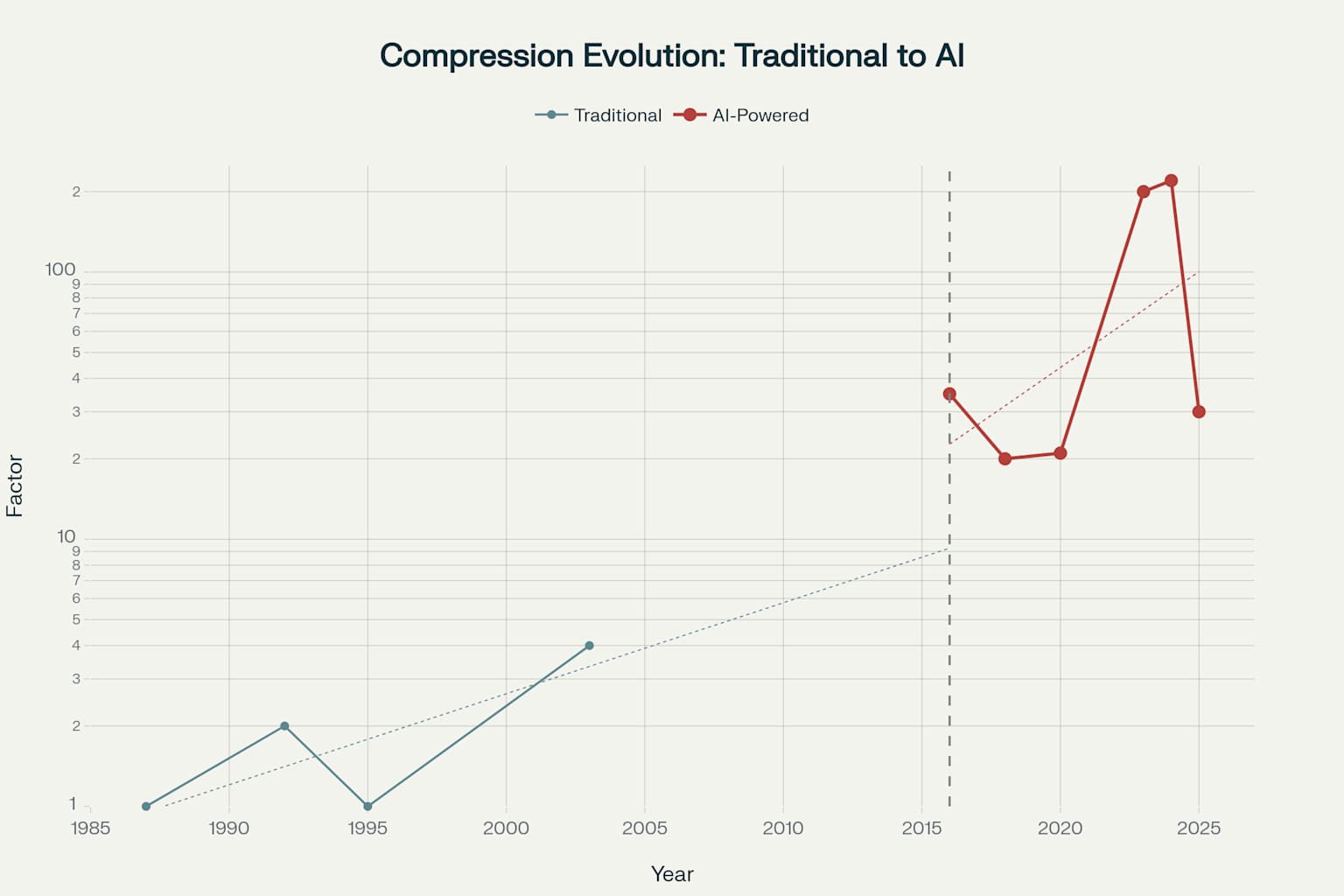
Technical Innovations Driving Progress
Quantum-Inspired Algorithms
The latest frontier in AI compression involves quantum-inspired algorithms that leverage principles from quantum computing without requiring quantum hardware. Zapata Computing has demonstrated compression of large language models using quantum techniques, achieving 10x size reductions while maintaining higher accuracy than uncompressed models of equivalent size. These quantum-compressed models show more stable training performance and can achieve comparable results with two orders of magnitude less training data.
Unified Compression Frameworks
Recent developments focus on creating unified frameworks that combine multiple compression techniques. The “deep compression” approach integrates pruning, quantization, and Huffman coding to achieve 35-49x storage reductions without accuracy loss. Similarly, GAN Slimming frameworks seamlessly integrate model distillation, channel pruning, and quantization into unified optimization processes.
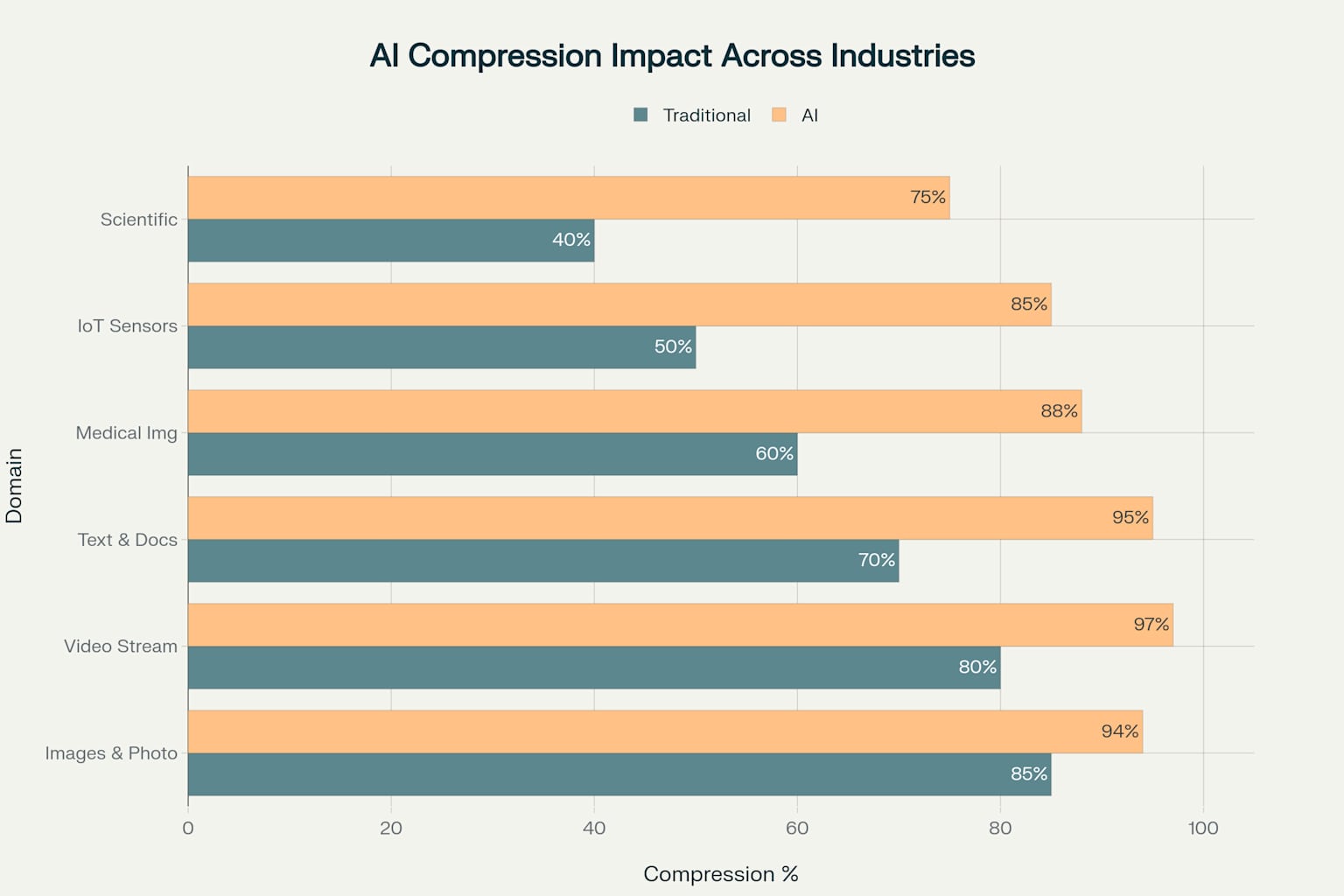
Real-Time Streaming Optimization
University of Tsukuba researchers have developed breakthrough real-time compression technology that automatically detects data patterns and compresses them to a minimum of one bit after a single pass. This innovation achieves 10-30% better compression ratios than conventional methods while enabling real-time processing without bulky memory requirements.

Industry Applications and Impact
The practical applications of AI compression span virtually every industry dealing with large data volumes. Video streaming services benefit from GAN-based compression achieving 97% compression ratios, while maintaining high-definition quality for mobile playback. Healthcare organizations leverage AI compression for medical imaging, reducing storage costs while preserving diagnostic accuracy.
Economic and Environmental Benefits
The economic impact extends beyond storage savings to include reduced bandwidth costs, faster transmission times, and lower energy consumption. Organizations implementing AI compression report significant reductions in cloud computing expenses and improved scalability for real-time applications.
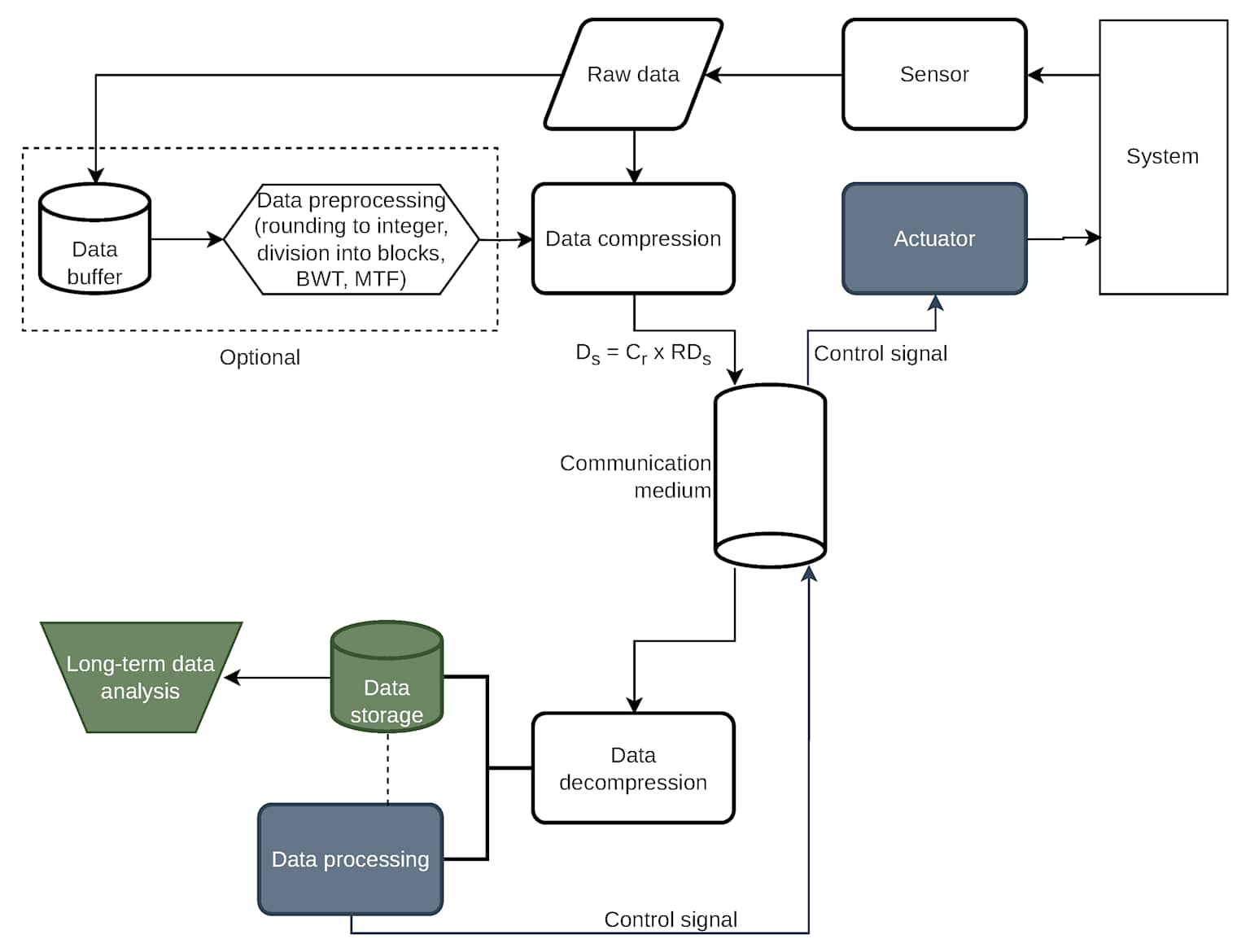
The Future of AI Compression
As we look toward the future, several trends are shaping the next generation of AI compression technology. Multimodal compression approaches that handle text, images, video, and audio simultaneously is emerging. Integration with edge AI hardware promises to bring sophisticated compression capabilities directly to IoT devices and mobile platforms.
Challenges and Opportunities
While AI compression delivers remarkable performance gains, challenges remain in computational complexity and implementation costs. Neural network-based methods often require longer processing times compared to traditional algorithms, limiting their use in time-sensitive applications. However, ongoing research in hardware acceleration and algorithm optimization continues to address these limitations.
The development of specialized compression hardware and more efficient training methodologies promises to make AI compression even more accessible and practical for widespread deployment. As these technologies mature, we can expect AI compression to become the standard approach across industries, fundamentally changing how we think about data storage and transmission.

Conclusion: A New Era of Data Efficiency
The integration of artificial intelligence into data compression represents one of the most significant technological advances in information processing. With compression improvements ranging from 2x to over 200x compared to traditional methods, AI has not just enhanced existing algorithms—it has redefined what’s possible in data compression.
As these technologies continue to evolve and mature, they promise to unlock new possibilities in everything from real-time communication to scientific research, making our increasingly data-driven world more efficient, sustainable, and accessible. The compression revolution is just beginning, and its impact will be felt across every aspect of our digital lives.
| Algorithm | Compression_Ratio | Quality_Retention_% | Speed_Factor | Energy_Efficiency | Category |
|---|---|---|---|---|---|
| Traditional JPEG | 10 | 85 | 1.0 | 1.0 | Traditional |
| Traditional H.264 | 20 | 88 | 1.0 | 1.0 | Traditional |
| Traditional PNG | 2 | 100 | 1.0 | 1.0 | Traditional |
| Traditional FLAC | 60 | 100 | 1.0 | 1.0 | Traditional |
| LMCompress (Text) | 300 | 95 | 0.1 | 2.5 | AI-Powered |
| Autoencoder (Images) | 50 | 90 | 0.6 | 3.2 | AI-Powered |
| GAN-based (Video) | 94 | 97 | 0.4 | 2.8 | AI-Powered |
| Transformer-based | 80 | 92 | 0.3 | 2.1 | AI-Powered |
| Quantum-inspired | 1000 | 90 | 0.2 | 4.0 | AI-Powered |
| AI Power Quality | 68 | 91 | 1.2 | 2.0 | AI-Powered |
| Real-time Stream | 30 | 88 | 1.5 | 3.5 | AI-Powered |


















